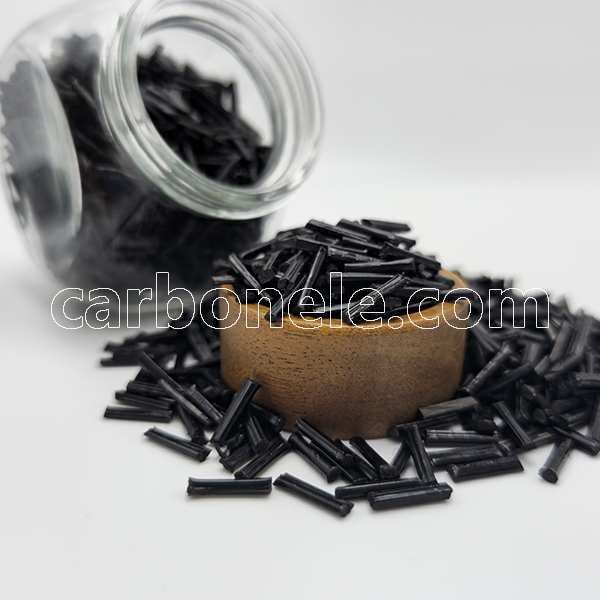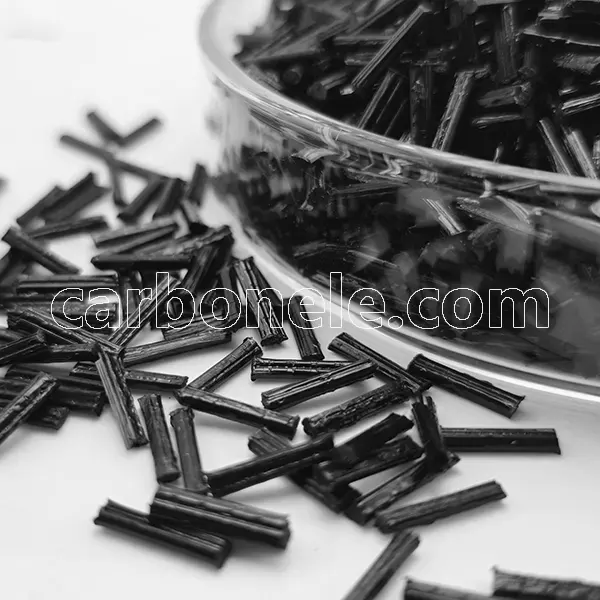Lightweight Thermoplastic Tensile Strength - Carbon Fiber Compounds Manufacturer | Supplier
Because of their low weight, simplicity of processing, cost-effectiveness of manufacture, and recyclability, lightweight thermoplastics find extensive use in a variety of fields. Conversely, one of the most important determinant of the application range and performance of these materials is their tensile strength.

Lightweight thermoplastic details
The tensile strength of lightweight thermoplastics is the subject of this work.
Because they are lightweight and simple to handle, lightweight thermoplastics—which include polypropylene, polyethylene, and other materials very similar to these—are employed extensively in many different sectors. Tensile strength is thus a crucial factor to take into account when evaluating material performance. This performance will be covered further below; closely connected to this performance are the load-bearing capacity and lifespan of the material. This paper will investigate the many elements influencing the performance of lightweight thermoplastics as well as provide tensile strength analysis of these materials.
Fundamental characteristics of lightweight, thermoplastic thermoplastics abound.
Because they frequently have a lower density than other types of thermoplastics, lightweight thermoplastics are very attractive for use in uses requiring weight reduction. For usage in applications, this makes them a great option. Apart from their low weight, these materials provide exceptional chemical stability, electrical insulation, and thermoplasticity as well. Moreover, they can keep their capacities even under a broad spectrum of conditions and temperatures.
Regarding the concept, tensile strength comes first
Tensile strength of a material is its highest resistance to breaking under stress, or maximum pressure capacity. It can resist maximal pressure of this kind. To ensure the dependability of materials in useful applications, one must have a trustworthy indicator that can assess their mechanical qualities. Mechanical qualities of materials may be measured with a dependable signal.
Regarding lightweight thermoplastics, what factors define the tensile strength of these materials?
Parts and elements of the whole
The chemical makeup of the material under question is one of the factors influencing the tensile strength of lightweight thermoplastics. The fact that factors including as weight, molecular structure, and the kind of additives present would be a good example of this because they would ultimately influence the mechanical qualities of the polymer chain.
The approach of processing used
Tensile strength of lightweight thermoplastics depends much on the kind of processing used on these materials. Among these kinds of technologies are moulding processes include blow moulding, extrusion, and injection moulding. Flights in the internal structure of the material might cause the tensile strength of the material to drop; so, processing events that are inappropriate could lead to such faults.
Proof of the environmental condition
Furthermore affecting the tensile strength of lightweight thermoplastics are environmental factors like temperature, humidity, and chemical media. Under very demanding conditions, the material’s tensile strength might decrease.
Design of the building’s configuration
Apart from the size and geometry of the elements, another aspect influencing the tensile strength of lightweight thermoplastics is the structural design. Reasonable designs have the ability to simultaneously improve material load-bearing capacity and durability, thereby enhancing their respective qualities.
Using numerous techniques helps to increase the tensile strength of very lightweight thermoplastics.
The content has been changed.
The addition of reinforcing agents, fillers, or comonomers into lightweight thermoplastics might help to raise their tensile strength. For example, the mechanical qualities of the material as a whole may be much enhanced by adding glass or carbon fibre.
Improvement of the process’s efficiency
Reducing the number of flaws in the material will help to raise its tensile strength by optimising the processing technology—which may include changing the injection mould parameters, raising the mould temperature, or applying specialist extrusion technology. One may do this by raising the mould’s temperature.
tweaks done on the surface
Surface treatment methods include coating, plating, or surface hardening might help to enhance the surface qualities of lightweight thermoplastics. Furthermore capable of increasing the component’s tensile strength are these techniques.
Building composite constructions
The total tensile strength of the structure may rise if composite structure design—which combines the coupling of lightweight thermoplastics with other high-performance materials—is followed. This therefore allows one to maximise the benefits that every one of these materials offers.
an analysis of the situation of the application
Applications of lightweight thermoplastics in sectors like the automotive sector, the aviation industry, the electronics company, and the packaging industry depend on a high tensile strength. Every one of these sectors has links to the packaging sector. By means of particular case studies, we may get a more complete knowledge of the performance of lightweight thermoplastics in useful purposes.
In the sphere of vehicle manufacture, applications are quite crucial
Lightweight thermoplastics are produced in the automotive sector for the manufacture of a wide spectrum of automotive panels and components for both inside and outside of cars. These parts are somewhat light, but their modification of the material and structural optimisation help them to provide enough tensile strength.
Within the domain of aviation, the framework has many applications.
In the aircraft industry, tensile strength of lightweight thermoplastics is very important. This is so since the aim of maintaining structural integrity of aircraft is to guarantee their capacity to carry on operation. High-performance composite materials and innovative processing techniques allow one to meet the exact standards of the aviation industry. This is so because the aviation industry has extremely exact standards.
Uses within the field of electronic manufacturing
Regarding the development of housings for electronic equipment meant to endure for a long amount of time, the tensile strength of lightweight thermoplastics is of great relevance in the electronics sector. Changing the material and the surface treatment helps one increase the tensile strength and wear resistance of the housing. One may do this simply adjusting the content.
Uses perhaps relevant within the packaging sector
An significant factor in the packaging sector is the protective qualities of the materials used for packaging; thus, the tensile strength of lightweight thermoplastics directly affects them. It is possible to generate lightweight packing materials with a high tensile strength by optimising the formulations of the components and the processing procedure. One may consider this idea.

Lightweight thermoplastics
Tensile strength of lightweight thermoplastics is one of the most important performance criteria used in many different specialist application fields. Its tensile strength may be sufficiently raised by means of material modification, process optimisation, surface treatment, composite structure design, and so meet the demands of many sectors. This will help one to effectively build composite buildings. Tensile strength of lightweight thermoplastics is expected to keep increasing as materials science and engineering technologies develop. This is so because constant development of novel materials is in progress. The availability of more reliable and high-performance material solutions resulting from this will help every aspect of life.
Previous News
Lightweight thermoplastics are mainly used in i...Next News
Understanding Carbon Fiber Reinforced Nylon 66 ...
Feature Product
-
PA12 LCF30 for Drone Fuselages & Wings
What do you know about PA12 LCF30? PA12 ...
-
Competitive Price PA6 LCF30 Composites
What’s it? PA6 LCF30, which stands...
-
ABS CF10 Compound ABS 10%CF Thermoplastic Compo...
What’s ABS CF10? ABS CF10 refers t...








